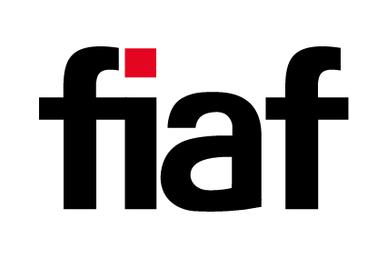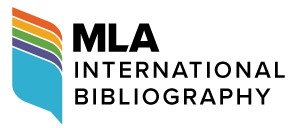Dossier: Mapping Screen Heritage
Introduction
Rinella Cere, James Fenwick, and Danilo Giglitto
[PDF]
Archives of film and media are being challenged, critiqued, and reimagined. The heritage that has been preserved and the knowledge production to which it contributes has typically reinforced systemic structural barriers and inequalities and privileged dominant histories, identities, and communities, whilst sidelining and marginalising others (Cade; Gaines; Gledhill and Knight; Hagener and Zimmermann; Sawadogo). But a paradigm shift is taking place. Film and media history is in flux and being reframed through, for example, women’s film history (Ball et al.; Bell, Movie Workers; Galt; Gledhill and Knight; Hennefeld and Horak), queer history (Anselmo; Damiens; McKinney) Black film history (Cade; McLeod Cramer; Posner and Cifor), African film history (Mano et al.), object-centred approaches (Fenwick; Hastie; Stead), memory studies and oral history (Bell, ‘“I”’; Biltereyst et al.; Cobb and Williams; Kuhn), museology and media archaeology (Cere; Hall and Ellis; Huhtamo and Galili; Lameris), ethnography and early film history (Groo; Ingravalle; Porter), decolonisation (Cere et al.), and filmmaking and performance (El Hassan; Dust & Metal; Siewert). The paradigm shift has also been influenced by other disciplines from across the humanities, particularly critical theoretical frameworks that have increasingly been adopted to decolonise (Cere et al.; Stoler), decentre (Hamilton et al.), and contest the contents of archives and the knowledge-production process (Chaudhuri et al.), whilst creative practices are being used to disrupt, recycle, and reappropriate archives and thereby rethink the role they play in public history (Baron; Breakell and Russell; Russell). This paradigm shift has been influenced—directly or indirectly—by fields such as critical archive studies, which have questioned the dominant status of traditional archival praxis (Caswell et al.), and called for new approaches including community archiving (Caswell), cocreation (Popple et al.), archival activism (Flinn), and slow archiving (Christen and Anderson).
The above list is just a snapshot of the fast-evolving landscape of film and media history and the archival approaches underpinning it. Yet, the list demonstrates the breadth and scope of research being undertaken and the innovative methods being adopted, whilst also indicating how there are still clear gaps and a need to go much further in reframing film and media history. As such, it is vital to bring into conversation these disparate disciplines and professions, bridging the “archival gap” between researchers and archivists, for example, to share good practice, collaborate, and initiate new approaches. But the methods, perspectives, and frameworks outlined above are bringing into question long-held certainties within film and media history and the prevailing film canon.
This dossier brings together a selection of papers and articles that indicate the kinds of approaches and methods increasingly being adopted in the use of film and media archives and the ways in which film and media history are being reframed as a result. They build on ideas and concepts of activism, postcolonial critique, decolonisation, creative reuse and disruption, sustainability, and archival value. The dossier stems from the two-day international conference Heritage, Community, Archives: Methods, Case Studies, Collaboration, held in 2023. The conference brought together over one hundred delegates from across disciplines, professions, and career stages, with the contributions having a core focus on culture, media, and film. The papers and articles in this dossier were selected from the conference to serve as a lens onto some of the approaches that have been adopted, containing case studies that have challenged or contested archival methods and practices, or foregrounded overlooked aspects of film and media heritage.
Samantha Kountz, in her paper “Hollywood Shuffle: The History and Impact of Maya Cade’s Black Film Archive”, considers the role of archives in the knowledge production process, arguing that what is valued as being worthy of preservation influences the construction of the film canon and historiography. Kountz focuses on a case study of Maya Cade’s Black Film Archive to critique “preconceived ideas of what films should be considered ‘canon’” in film history. Kountz argues that Cade’s archive not only brings into question concepts of archival value and film historiography, but also how the film industry and film history continue to overlook and undervalue Black American cinema today. For Kountz, the necessity of the Black Film Archive is due to what she terms “prejudicial loopholes” that have prevented certain films and history from being deemed worthy of preservation. These prejudicial loopholes continue to exist, and therefore, community-led grassroots archiving projects like the Black Film Archive are necessary to counter the biased dominance of existing archival praxis, film heritage, and film historiography.
Pablo Alvarez, in his paper “Confronting the Empire: Militant Archival Practices in Testimonies from Fallujah and A Fidai Film”, examines how film archives can be reappropriated to counter dominant narratives and challenge imperialist archival and knowledge-production practices. Alvarez focuses on two films, each of which incorporates archival film footage from the 2003 US-led invasion of Iraq and the subsequent war that engulfed the country: Testimonies from Fallujah (2004), directed by independent journalist and documentary filmmaker Hamodi Jasim, and A Fidai Film (2024), directed by Palestinian artist and filmmaker Kamal Aljafari. Through these case studies, Alvarez emphasises the violence of colonial archives and the contested value of film archives, emphasising who gets to decide and gatekeep what is preserved, what is valuable, and who can have access. What the case studies also indicate are the creative methods that can be adopted to resist and counter these forces, with archival material being reappropriated and reframed from the bottom-up. As Alvarez concludes, “the films not merely expose but also confront the imperial violence intrinsic in these materials. In other words, the violence of the archives is reversed in these two films and used against themselves and the powers that produce and preserve them”.
Danilo Giglitto and Rinella Cere, in their article “‘My Natives to Myself’: A Critical Perspective on Ethnographic Films”, examine early British anthropological films as a key component of the “colonial apparatus”. They argue that the vast majority of anthropological films preceding the Second World War have still yet to undergo a postcolonial critique, but with this article, they commence that work. They do so through case studies of the work of two colonial-era anthropologists, Beatrice Blackwood—who worked at the Human Anatomy Department at the University of Oxford and later at the Pitt Rivers Museum—and Ursula Graham Bower—an amateur anthropologist who worked in Assam and later fought as a guerrilla resisting advancing Japanese forces. Giglitto and Cere apply a decolonial framework to Blackwood and Graham Bower’s ethnographic films, which they define as being a type of documentary that were used to “convey the studied subjects’ cultural practices, social interactions, and everyday lives”. In taking this approach, the aim is to thoroughly critique the colonial contexts of the films and allow for a “deeper understanding” of how “intrinsic historical biases shaped the portrayal of colonised cultures, informing contemporary discussions on colonialism and its enduring impact on media and cultural heritage”.
Esther Johnson, in her article “Speaking With: Histories of Vietnam Explored Through Archive Film”, examines the role of archives in her film Dust & Metal (Cát bụi & Kim loại, 2022). The film is a creative documentary in which Johnson mixes archive footage from the Vietnam Film Institute (VFI) with original footage and crowdsourced film to reveal “a plurality of unfamiliar social histories of Vietnam”. Johnson’s motivation for the film stemmed from a desire to engage more deeply with Vietnam’s film heritage but finding it to be largely inaccessible beyond poor quality films uploaded to video-sharing platforms like YouTube. Johnson initiated a collaboration with the VFI, supported by funding from the British Council’s FAMLAB: Film, Archive, Music Lab and Heritage of Future Past grants and working with Live Cinema UK to provide a live score for the film. Johnson also uses the article—and the film—to examine the tension of presence and absence within archives and explains how she used a “third pool of audiovisual material potentially missing from ‘official’ state archives, and a means of creating a new collection of film relating to Vietnam”. This was achieved by inviting the wider public to upload their own film footage via an online portal. Overall, Johnson’s creative approach to the use of archives like those in the VFI and in a country like Vietnam indicates how it is vital to form collaborative partnerships internally, particularly to ensure respect for sensitivities around footage from the war.
Lucia Di Girolamo, like Johnson, discusses a novel approach to the creation and use of archives. Her article, “Educational Film Archives: A Tool for Sustainable Tourism”, stems from a larger project about revisiting the meaning of cultural heritage in the Campania region in southern Italy, one of the aims of which was to create a digital archive of media- and literature-induced tourism (Campania Landtelling). The article tackles the question of the shift from physical to digital archives and online interactivity and their implications for the present and future of archival memory. One of these implications is identified in the concept of “cultural amplifier”, borrowed from Jerome Bruner, which Di Girolamo applies to the archive “because of how this highlights and reshapes the characteristics of a community’s memory”. Campania Landtelling is described as an archive with an educational purpose as students and researchers are asked to assemble images of places in which literature, films, and TV series are set. These are then compared with images of real places geolocatable via Google Maps. Through these digital archival journeys or “routes”, the users navigate their personal and/or collective memories, whether these derive from direct knowledge of the cultural heritage or indirectly from its visual representations, in either case, as she writes, “enabling a process of individual appropriation of the memory of the territory.” But for the author, this is insufficient and she therefore argues for a politics of archival care that engenders “critical awareness” and “actions of care” for the places at the centre of film-induced tourism. Hence the meaning behind Campania Landtelling as a “living archive”.
The works published in this dossier offer only a snapshot of the wider research taking place across the humanities and archive studies that is challenging, reframing, and rebuilding our shared screen heritage. But what they indicate are positive, creative, and inclusive ways forward in the use of archives and the preservation of film and media history.
References
1. Anselmo, Diana W. A Queer Way of Feeling: Girl Fans and Personal Archives of Early Hollywood. U of California P, 2023.
2. Ball, Vicky, et al. “Structures of Feeling: Contemporary Research in Women’s Film and Broadcasting History.” Women’s History Review, vol. 29, no. 5, July 2020, pp. 759–65. https://doi.org/10.1080/09612025.2019.1703533.
3. Baron, Jaimie. Reuse, Misuse, Abuse: The Ethics of Audiovisual Appropriation in the Digital Era. Rutgers University Press, 2021.
4. Bell, Melanie. “‘I Owe It to Those Women to Own It’: Women, Media Production and Intergenerational Dialogue through Oral History.” Journal of British Cinema and Television, vol. 18, no. 4, Oct. 2021, pp. 518–37. https://doi.org/10.3366/jbctv.2021.0593.
5. ——. Movie Workers: The Women Who Made British Cinema. U of Illinois P, 2021.
6. Biltereyst, Daniel, et al., editors. The Routledge Companion to New Cinema History. Routledge, 2019.
7. Breakell, Sue, and Wendy Russell, editors. The Materiality of the Archive: Creative Practice in Context. Taylor & Francis, 2024.
8. Bruner, Jerome. Studies in Cognitive Growth. Wiley & Sons Inc., 1966.
9. Cade, Maya S. “On Building Black Film Archive, a Digital Archive That Responds to a Movement”. JCMS: Journal of Cinema and Media Studies, vol. 62, no. 1, Sept. 2022, pp. 167–69. https://doi.org/10.1353/cj.2022.0069.
10. Campania Landtelling. “La Campania raccontata.” 2025, https://www.campanialandtelling.it. Accessed 16 July 2025.
11. Caswell, Michelle. Urgent Archives: Enacting Liberatory Memory Work. Verlag nicht ermittelbar, 2021.
12. Caswell, Michelle, et al. “Critical Archival Studies: An Introduction.” Journal of Critical Library and Information Studies, vol. 1, no. 2, June 2017. https://doi.org/10.24242/jclis.v1i2.50.
13. Cere, Rinella. An International Study of Film Museums. Routledge, 2021.
14. Cere, Rinella, et al. “Uncovering Colonial Legacy in a British Digital Archive: The Pitt Rivers Museum Case.” Digital Approaches to Inclusion and Participation in Cultural Heritage. Insights from Research and Practice in Europe, edited by Danilo Giglitto et al., Routledge, 2023, pp. 141–59. https://doi.org/10.4324/9781003277606-8.
15. Chaudhuri, Nupur, et al. Contesting Archives: Finding Women in the Sources. U of Illinois P, 2010.
Christen, Kimberly, and Jane Anderson. “Toward Slow Archives.” Archival Science, vol. 19, no. 2, June 2019, pp. 87–116. https://doi.org/10.1007/s10502-019-09307-x.16. Cobb, Shelley, and Linda Ruth Williams. “Histories of Now: Listening to Women in British Film.” Women’s History Review, vol. 29, no. 5, July 2020, pp. 890–902. https://doi.org/10.1080/09612025.2019.1703542.
17. Damiens, Antoine. LGBTQ Film Festivals: Curating Queerness. Amsterdam UP, 2020. https://doi.org/10.2307/j.ctvzpv71f.
18. Dust & Metal [Cát bụi & Kim loại]. Directed, written, and edited by Esther Johnson, Live Cinema UK and Blanche Pictures, 2022.
19. El Hassan, Azza. The Afterlife of Palestinian Images: Visual Remains and the Archive of Disappearance. Springer Nature Switzerland, 2024. https://doi.org/10.1007/978-3-031-66951-4.
20. Fenwick, James. Archive Histories: An Archaeology of the Stanley Kubrick Archive. Liverpool UP, 2024. https://doi.org/10.2307/jj.14086459.
21. A Fidai Film. Directed by Kamal Aljafari, 2024.
22. Flinn, Andrew. “Archival Activism: Independent and Community-Led Archives, Radical Public History and the Heritage Professions.” InterActions: UCLA Journal of Education and Information Studies, vol. 7, no. 2, May 2011. https://doi.org/10.5070/D472000699.
23. Gaines, Jane M. Pink-Slipped: What Happened to Women in the Silent Film Industries? U of Illinois P, 2018. https://doi.org/10.5406/j.ctt212172p.
24. Galt, Frances C. Women’s Activism Behind the Screens: Trade Unions and Gender Inequality in the British Film and Television Industries. Bristol University Press, 2020. https://doi.org/10.2307/j.ctv19cwb22.
25. Gledhill, Christine, and Julia Knight. “Introduction.” Doing Women’s Film History: Reframing Cinemas, Past and Future, edited by Christine Gledhill and Julia Knight, U of Illinois P, 2015, pp. 1–12.
26. Groo, Katherine. Bad Film Histories: Ethnography and the Early Archive. U of Minnesota P, 2019. https://doi.org/10.5749/j.ctvc5pcbz.
27. Hagener, Malte, and Yvonne Zimmermann. “Introduction: Unpacking Film History’s Own Histories Towards an Archaeology of Film Historiography.” How Film Histories Were Made: Materials, Methods, Discourses, edited by Malte Hagener and Yvonne Zimmermann, Amsterdam UP, 2023, pp. 13–44. https://doi.org/10.2307/jj.14170605.
28. Hall, Nick, and John Ellis, editors. Hands on Media History: A New Methodology in the Humanities and Social Sciences. Routledge, 2020.
29. Hastie, Amelie. Cupboards of Curiosity: Women, Recollection, and Film History. Duke UP, 2007.
30. Hennefeld, Maggie, and Laura Horak. “Editors’ Introduction.” Feminist Media Histories, vol. 10, no. 2–3, Apr. 2024, pp. 1–9. https://doi.org/10.1525/fmh.2024.10.2-3.1.
31. Huhtamo, Erkki, and Doron Galili. “The Pasts and Prospects of Media Archaeology.” Early Popular Visual Culture, vol. 18, no. 4, Oct. 2020, pp. 333–39. https://doi.org/10.1080/17460654.2021.2016195.
32. Ingravalle, Grazia. Archival Film Curatorship: Early and Silent Cinema from Analog to Digital. Amsterdam UP, 2023. https://doi.org/10.2307/jj.9827017.
33. Kuhn, Annette. Exploring Cinema Memory. Thirsty Books, 2023.
34. Lameris, Bregt. The Film Museum Practice and Film Historiography: The Case of the Nederlands Filmmuseum (1946–2000). Amsterdam UP, 2017. https://doi.org/10.5117/9789089648266.
35. Mano, Winston, et al., editors. African Film Cultures: Contexts of Creation and Circulation. Cambridge Scholars, 2017.
36. McKinney, Cait. Information Activism: A Queer History of Lesbian Media Technologies. Duke UP, 2020. https://doi.org/10.2307/j.ctv14t48t3.
37. McLeod Cramer, Lauren. “Building the Black (Universal) Archive and the Architecture of Black Cinema.” Black Camera, vol. 8, no. 1, 2016, p. 131. https://doi.org/10.2979/blackcamera.8.1.0131.
38. Popple, Simon, et al., editors. Communities, Archives and New Collaborative Practices. Policy Press, 2020. https://doi.org/10.2307/j.ctvx1hvvd.
39. Posner, Miriam, and Marika Cifor. “Generative Tensions: Building a Digital Project on Early African American Race Film.” American Quarterly, vol. 70, no. 3, 2018, pp. 709–14. https://doi.org/10.1353/aq.2018.0056.
40. Porter, Laraine. Picture Perfect: Landscape, Place and Travel in British Cinema Before 1930. U of Exeter P, 2007. https://doi.org/10.2307/jj.28297738.
41. Russell, Catherine. Archiveology: Walter Benjamin and Archival Film Practices. Duke UP, 2018. https://doi.org/10.1215/9780822372004.
42. Sawadogo, Boukary. “In Defense of African Film Studies.” Black Camera, vol. 12, no. 2, 2021, p. 399. https://doi.org/10.2979/blackcamera.12.2.23.
43. Siewert, Senta. Performing Moving Images: Access, Archives and Affects. Amsterdam UP, 2020. https://doi.org/10.2307/j.ctv1b9f6d1.
44. Stead, Lisa. Reframing Vivien Leigh: Stardom, Gender, and the Archive. Oxford UP, 2021. https://doi.org/10.1093/oso/9780190906504.001.0001.
45. Stoler, Ann Laura. Along the Archival Grain: Epistemic Anxieties and Colonial Common Sense. Princeton UP, 2009.46. Testimonies from Fallujah. Directed by Hamodi Jasim, Al-Qitaf Productions, 2004.
Suggested Citation
Cere, Rinella, James Fenwick, and Danilo Giglitto. “Introduction: Mapping Screen Heritage.” Alphaville: Journal of Film and Screen Media, no. 29–30, 2025, pp. 220–226. DOI: https://doi.org/10.33178/alpha.2930.12
Rinella Cere is Reader Emerita in Film, Media and Cultural Studies at Sheffield Hallam University (UK). Recent publications include An International Study of Film Museums (Routledge, 2021); “Uncovering the Colonial Legacy in a British Digital Archive: The Pitt Rivers Museum Case” in Digital Approaches to Inclusion and Participation in Cultural Heritage (Routledge, 2022); “The Eco-Documentary Form in a Postcolonial World: A Force for Good?” in La società (in)sostenibile. Ecologia e comunità tra letteratura, cinema e altri media (Franco Cesati Editore, 2024).
James Fenwick is a Senior Lecturer in the Institute for Cultural Practices, coeditor of the Historical Journal of Film, Radio and Television, and an IAMHIST Council member. His most recent book is Archive Histories: An Archaeology of the Stanley Kubrick Archive (Liverpool University Press, 2024).
Danilo Giglitto is an Associate Lecturer at Sheffield Hallam University, UK. He has several years of experience in researching at the intersection of cultural heritage, digital technologies, and social innovation, and has collaborated in several international projects exploring these themes. He has coedited Digital Approaches to Inclusion and Participation in Cultural Heritage. Insights from Research and Practice in Europe (Routledge, 2023) and Advanced research and design tools for architectural heritage. Unforeseen paths (Routledge, 2024), and published in journals such as the International Journal of Heritage Studies and Museum & Society. He holds a PhD in Sociology from the University of Aberdeen. He has led and coorganised numerous national and international outreach and academic events focused on cultural heritage.









